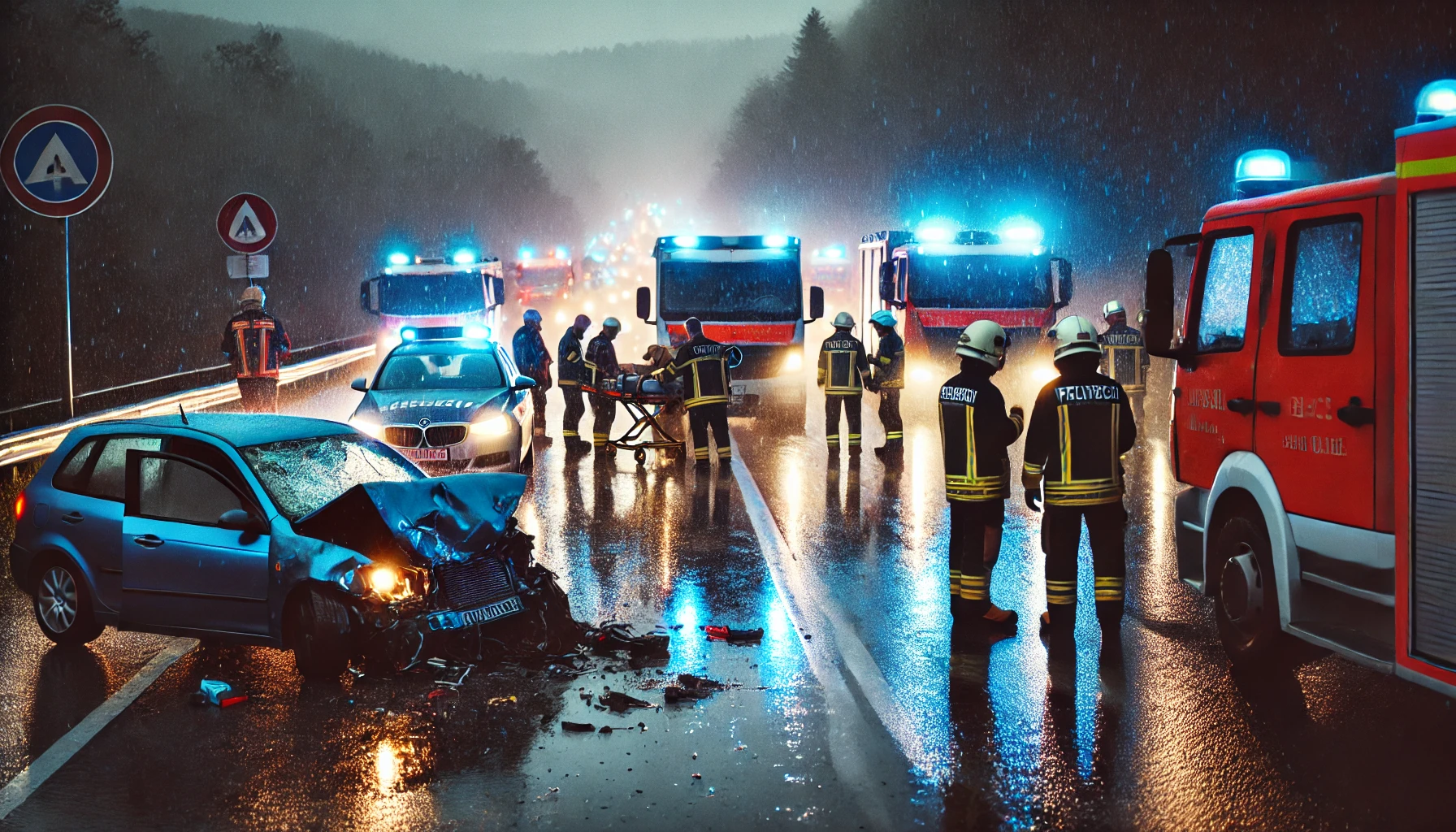Tragic Accident Near Celle: Causes, Impact, and Consequences

Introduction
A devastating accident near Celle has sent shockwaves through the community, raising concerns about road safety and emergency response measures. The tragic event, which occurred on a busy highway, has left families grieving and authorities scrambling for answers. Accidents like these are stark reminders of the dangers lurking on the roads and highlight the need for stricter safety regulations and enhanced awareness.
The accident took place during peak traffic hours, causing significant disruptions and leading to an extensive rescue operation. Initial reports indicate multiple casualties, with emergency personnel working tirelessly to manage the crisis. As more details emerge, the need for a thorough investigation into the causes and contributing factors becomes increasingly apparent.
Understanding the circumstances surrounding the accident is crucial to preventing similar incidents in the future. From road conditions to driver behavior, several factors may have played a role in this tragic event. This article delves deep into the incident, analyzing its impact, potential causes, and the steps needed to enhance road safety in the region.
Detailed Analysis of the Accident
Background Information
Celle, a historic town in Lower Saxony, is known for its picturesque landscapes and bustling road networks. However, its highways have also witnessed numerous traffic accidents over the years. The recent crash occurred on a stretch of road notorious for high-speed travel and frequent collisions, raising concerns about its safety infrastructure.
According to eyewitnesses, the accident involved multiple vehicles, including passenger cars and a commercial truck. The crash led to a pile-up, with several vehicles sustaining severe damage. Emergency responders arrived swiftly, but the extent of injuries and fatalities made the rescue effort particularly challenging.
Possible Causes of the Accident
Several factors could have contributed to this catastrophic event. One major concern is driver error, which remains a leading cause of accidents worldwide. Speeding, reckless driving, or fatigue may have played a role, compromising the ability to react promptly to sudden obstacles or changes in traffic flow.
Weather conditions at the time of the accident may have also been a contributing factor. Poor visibility, slippery roads, or heavy rainfall can significantly increase the likelihood of collisions. Investigators will likely examine road conditions to determine whether external factors exacerbated the situation.
Moreover, mechanical failures, such as brake malfunctions or tire blowouts, can lead to devastating accidents. Vehicle inspections and maintenance records will be scrutinized to establish whether technical issues played a role in the tragedy.
Emergency Response and Rescue Operations

First responders, including paramedics, firefighters, and law enforcement officers, acted swiftly to manage the crisis. Their efforts involved extracting trapped passengers, administering first aid, and ensuring that traffic was redirected safely.
However, challenges such as vehicle entanglement, fuel leaks, and hazardous conditions made the rescue operation complex. Despite these obstacles, the coordinated response helped minimize further casualties and provided timely medical attention to the injured.
Impact on Victims and Society
Effects on the Victims and Their Families
The human toll of road accidents is often immeasurable. Families of the victims are left to cope with unimaginable grief, while survivors may face long-term physical and psychological trauma. Medical bills, rehabilitation, and emotional distress add to the burden, making post-accident recovery a daunting process.
Organizations offering psychological support and counseling services play a critical role in helping affected families navigate through their grief. Many communities rally together in such times, offering condolences and financial aid to those in need.
Traffic Disruptions and Infrastructure Impact
Major accidents often lead to traffic congestion and logistical challenges. In this case, the accident caused significant road closures, forcing commuters to seek alternative routes. Authorities had to implement temporary diversions, impacting businesses and daily commuters alike.
Long-term implications may include calls for infrastructure upgrades, such as better lighting, improved road signage, or speed limit enforcement. If poor road conditions contributed to the accident, government bodies may need to allocate funds for road repairs and safety enhancements.
Public Reaction and Media Coverage
The media plays a crucial role in informing the public about such incidents. News outlets covered the tragedy extensively, providing updates on the victims, rescue efforts, and ongoing investigations. The incident also sparked discussions on social media, with users sharing their concerns and condolences.
Public outcry for stricter traffic regulations and enforcement is growing. Many believe that heightened police patrols, harsher penalties for reckless driving, and better public awareness campaigns could prevent similar tragedies in the future.
Consequences and Safety Measures
Legal Investigations and Liabilities
Authorities have launched a full-scale investigation to determine liability and legal consequences. If negligence, such as reckless driving or mechanical failure, is identified as the primary cause, legal action may be taken against responsible parties. Prosecutors may also consider whether criminal charges are warranted, particularly if intoxication or intentional violations were involved.
Insurance claims and compensations will be another focal point. Victims’ families and survivors may seek damages for medical expenses, loss of income, and emotional suffering. Legal experts emphasize the importance of thorough investigations to ensure justice is served.
Lessons Learned and Prevention Strategies
To prevent similar accidents, road safety experts recommend various measures, including:
- Stricter law enforcement: Increased speed checks, DUI checkpoints, and road monitoring.
- Improved infrastructure: Installing crash barriers, better lighting, and advanced warning systems.
- Driver education programs: Encouraging responsible driving habits and awareness campaigns.
- Technological advancements: Promoting the use of AI-driven safety systems, automatic braking, and lane departure warnings in vehicles.
Role of Modern Safety Systems
Automobile manufacturers are increasingly integrating advanced safety technologies into vehicles. Features such as adaptive cruise control, automatic emergency braking, and collision avoidance systems can significantly reduce the risk of accidents. Encouraging widespread adoption of these technologies could be a game-changer in road safety.
Conclusion
The tragic accident near Celle serves as a sobering reminder of the dangers of road travel. While the exact causes are still under investigation, it is evident that a combination of human error, road conditions, and possible mechanical failures played a role. The aftermath has left families grieving, communities shaken, and authorities under pressure to implement preventive measures.
By prioritizing road safety, enforcing stricter regulations, and leveraging modern technology, future tragedies can be averted. Awareness, responsibility, and proactive measures are key to ensuring that roads become safer for all.
Frequently Asked Questions (FAQs)
1. What are the main causes of road accidents?
The leading causes include speeding, reckless driving, driver fatigue, intoxication, poor road conditions, and mechanical failures.
2. How can drivers improve their safety on the road?
Maintaining proper vehicle upkeep, following traffic laws, avoiding distractions, and adapting to weather conditions are crucial for safer driving.
3. What steps do authorities take after a major accident?
Authorities investigate the incident, assess legal liabilities, implement safety measures, and provide support for victims and their families.
4. What role does technology play in reducing accidents?
Advanced safety features in modern vehicles, such as automatic braking, lane-keeping assistance, and AI-driven monitoring systems, help prevent accidents.
5. What initiatives are in place to improve road safety in Celle?
Local authorities focus on infrastructure improvements, increased law enforcement, and awareness campaigns to enhance traffic safety in the region.
YouSie können auch lesen:https://bloggerman.de/emscherstrase/


